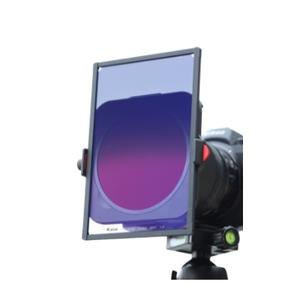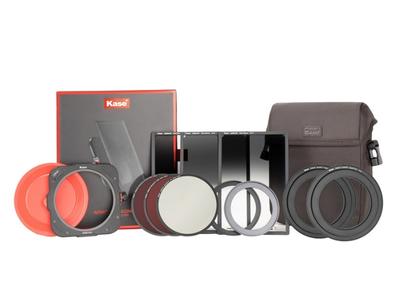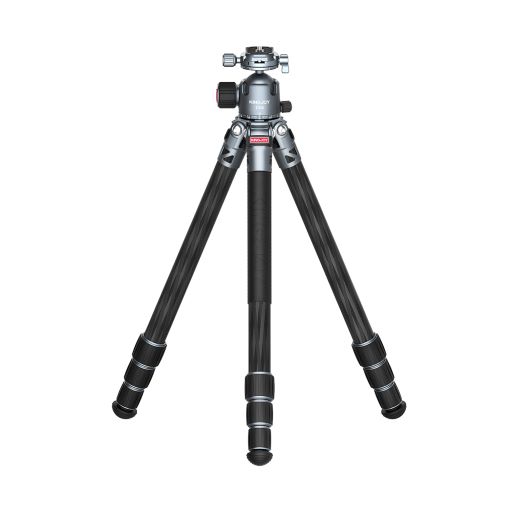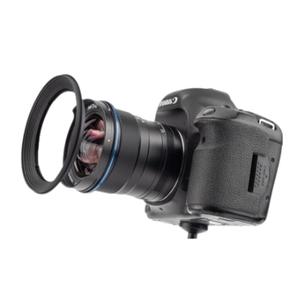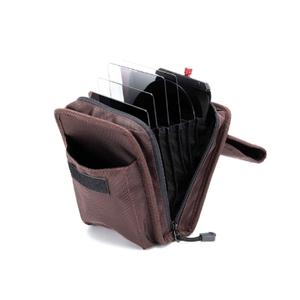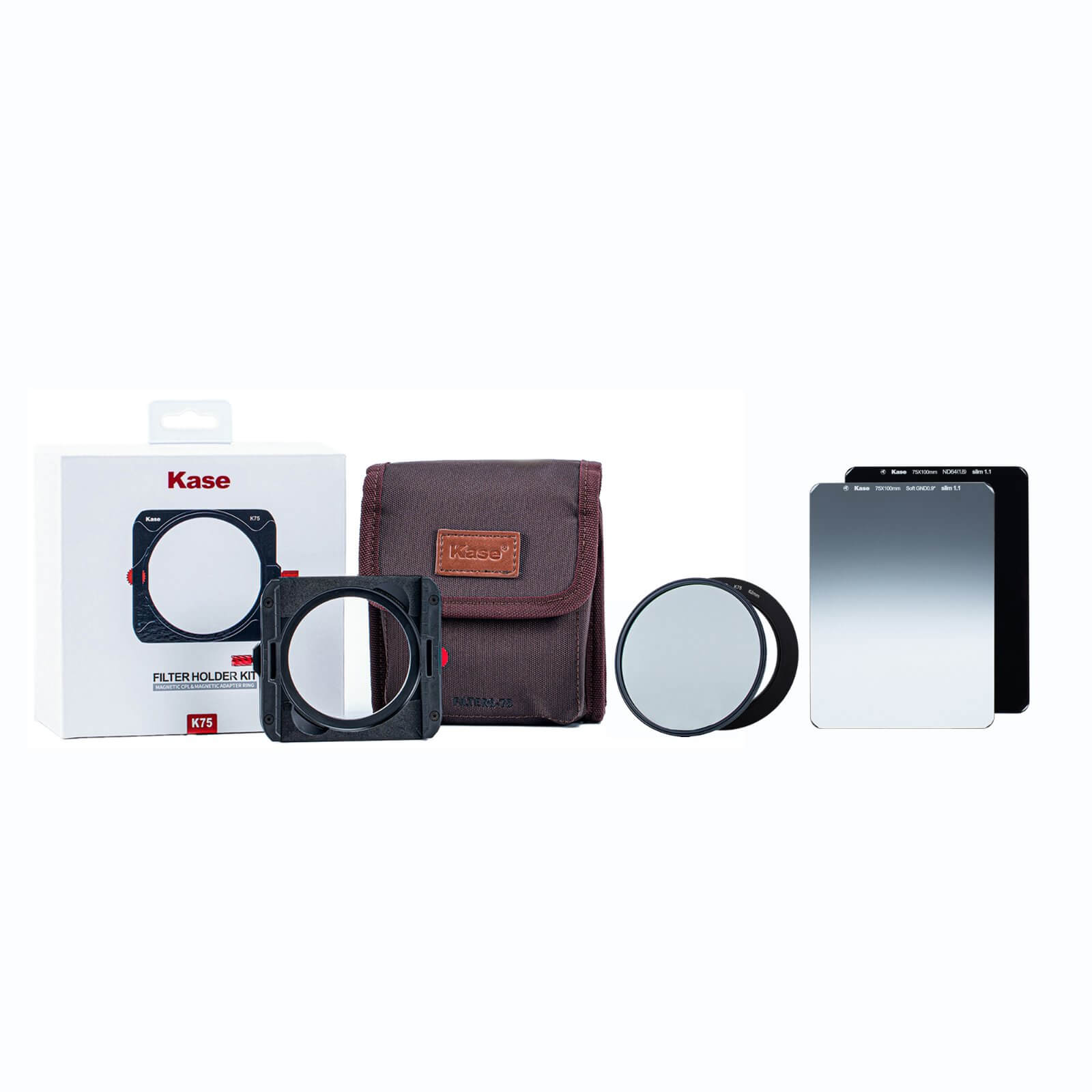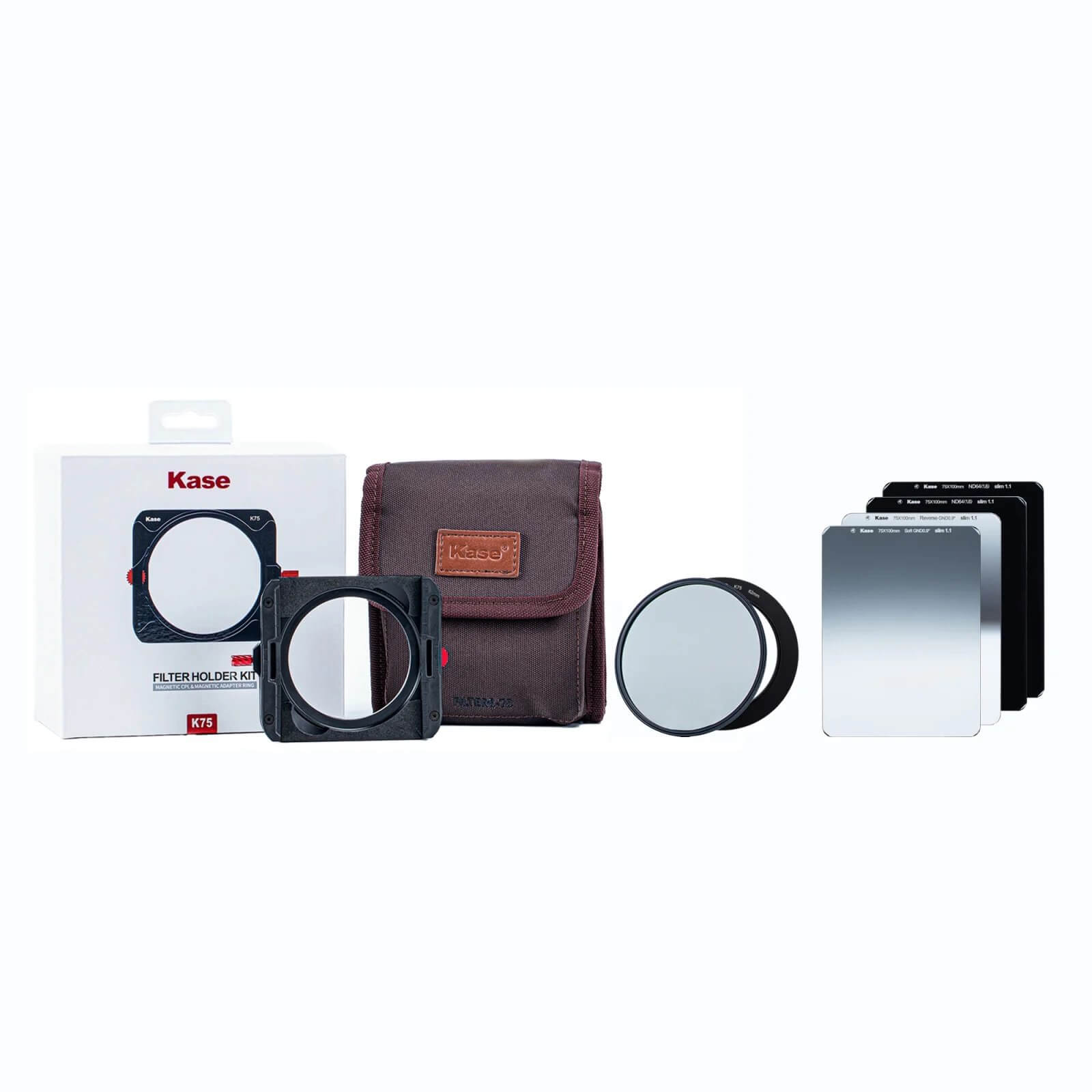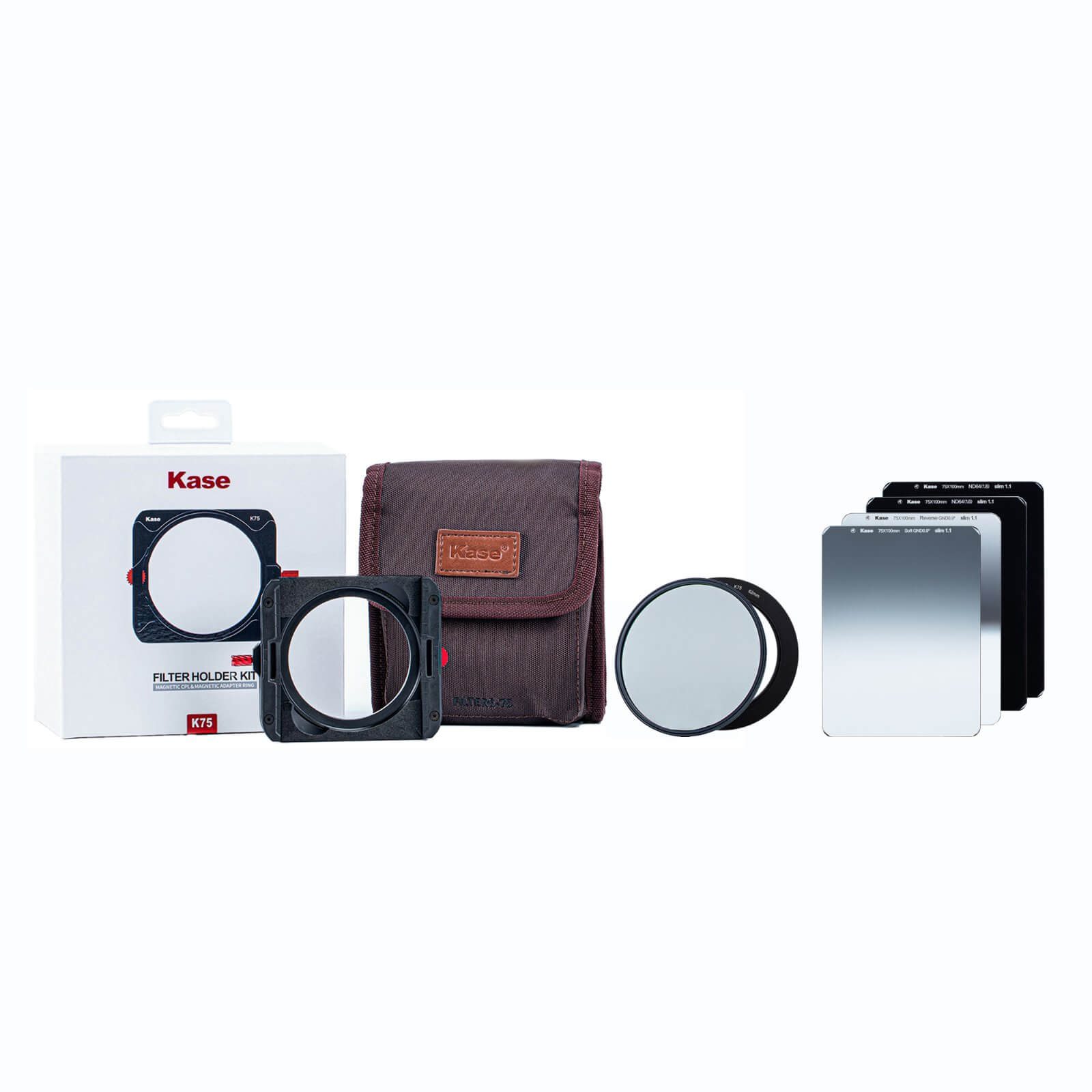Kase K75 System Sets Comparison
K75 Entry Level SetBegginer Set |
K75 High End SetPremium Starter Set |
K75 Master SetUltimate Starter Set |
|
|---|---|---|---|

|

|

|
|
| K75 FIlterholder + magnetic CPL filter + accessories |
✓ | ✓ | ✓ |
| Number of Filters: (plus CPL) |
2 | 3 | 4 |
| ✓ | ✓ | ✓ | |
|
Polarizing filter |
✓ | ✓ | ✓ |
|
ND64 |
✗ | ✓ | ✓ |
|
ND1000 |
✓ | ✓ | ✓ |
|
Soft GND 0.9 |
✓ | ✗ | ✓ |
|
Reverse GND 0.9 |
✗ | ✓ | ✓ |
| See details | See details | See details |
Not In Stock - Preorder possible
Not In Stock - Preorder possible
Not In Stock - Preorder possible
Why is the K75 system set one of the best on the market?
Our trademark: the quality
Some filters are already available for a few euros, others cost over 100 euros. The biggest differences are in the glass and material quality. Because the thinner the glass, the more expensive it is to produce, but the quality of the filter also increases and thus the quality of the images taken. A glass that is too thick can cause shadows to be cast on the screen. In addition, very cheap glass is often not completely flat and therefore does not break the light evenly, which sometimes leads to unusable results. In addition, all of our lenses are anti-reflective. Although this also leads to a higher price, it is usually worth it, especially for frequently used filters. So it makes sense with ND, GND or polarizing filters to dig a little deeper into your pocket and pay attention to high quality. In addition, our filters are all made of optical glass, which reproduces the colors of the images neutrally.
The individual components of the K75 Camera Filter Kits
The gray graduated filter and how it works
Graduated gray filters (GND filters) are a special type of graduated filter that are transparent at one end and darkened at the other end. The two areas converge in the middle of the filter, from clear to dark. This transition differs depending on the type of GND filter. The different types are described below for you. These filters are primarily used to balance the exposure of a scene, which in landscape photography naturally consists of a dark (foreground) and light (sky) section. A human eye is able to visualize a much larger range of light and shadow than a camera sensor. This is known as the "dynamic range" of a scene. Because the camera covers a smaller dynamic range, using GNDs helps capture the dynamic range of a scene with one exposure, rather than stitching together multiple shots with different exposure times in post-processing.
How do the types of GND filters in the K75 differ and when should they be used?
- Soft GND filter
- Hard GND filter
- Reverse GND filter
Is there a difference between gray graduated filters and graduated filters?
As the name suggests, both types of filters are graduated filters. Graduated gray filters go from dark to clear. However, there are also filters that fade from one color to transparent. In the 1980s, for example, tobacco graduated filters were very popular. Today, on the other hand, gradient filters with colored gradients are hardly ever used because this effect can be simulated on the computer with little effort.How to master difficult light situations with a gray filter
The gray filter works like sunglasses for the camera. If you attach this to the lens, the light hitting the sensor is reduced. Each neutral density filter has a certain strength, which indicates by how many apertures it reduces the incident light. This allows long exposures to be realized and the following effects to be created:- represent the water of a stream or sea waves velvety
- interesting effects can be created with waterfalls or a lake
- in city photography you can make people "disappear" with the help of a gray filter
- Let clouds move in the picture (wiping effect)
- take decent pictures in very sunny areas
Read more about the usage of different ND filters in photography.
How is the exposure time for a gray filter determined without a table?
1/25 second x 2 = 1/13 second
1/13 second x 2 = 1/8 second
1/8 second x 2 = 1/4 second
1/4 second x 2 = 1/2 second
1/2 second x 2 = 1 second
1 second x 2 = 2 seconds
2 seconds x 2 = 4 seconds
4 seconds x 2 = 8 seconds
8 seconds x 2 = 16 seconds
16 seconds x 2 = 32 seconds
See our ND filter calculator-table here.
The versatile polarizing filter included in the K75 System
Another important type of filter that you should not do without is the so-called polarization filter, which is also known as a polarizing filter and CPL filter. Polarizing filters allow you to remove unwanted reflections from various surfaces such as glass, grass, water and leaves. With meadows and trees, this ensures a higher contrast and richer landscape, as can be seen in the image below. With glass, a polarizing filter makes the reflections almost completely disappear.
The effect is not always the same and depends on different factors. For example, the CPL filter can be rotated on the lens to change the intensity of the effect. The effect itself comes about because light waves oscillate in a certain direction. This direction is also known as the direction of polarization of the light. A polarizing filter is coated in such a way that it only allows light of a certain polarization to pass through. As a result, it swallows around 2 apertures of light, but at the same time reduces unwanted reflections.
| Lens | Lens Diameter | Recommended Filter Size |
|---|---|---|
| Canon FE 16-35 mm f/2.8 | 82mm | 95mm |
| Canon RF 15-35 mm f/2.8L IS USM | 82mm | 95mm |
| Fujinon XF 10-24 mm f/4 R OIS | 72mm | 77mm |
| Fujinon XF 16-80 mm f/4 R OIS | 72mm | 77mm |
| Fujinon 12-100 mm f/4 IS | 72mm | 77mm |
| Laowa 15mm f/2 | 72mm | 95mm |
| Nikkor 24-120mm f/4G ED VR | 77mm | 82mm |
| Nikkor Z 14-30mm f/4 S | 82mm | 95mm |
| Nikkor Z 14-24mm f/2.8 S | 112mm | 112mm |
| Sigma 24-70 f/2.8 | 82mm | 95mm |
| Sony FE 16-35 mm f/4 ZA OSS | 72mm | 82mm |
| Sony FE 16-35 mm f/2.8 GM | 82mm | 95mm |
| Sony FE 24-105 f/4 GM OSS | 77mm | 77mm |
| Tamron 17-28mm F/2.8 DI III RXD | 67mm | 82mm |
| Zuiko 8-25mm f/4 PRO | 72mm | 77mm |
| Zuiko 12-100mm f/4 IS PRO | 72mm | 77mm |
| Zuiko 12-40mm f/2.8 PRO | 62mm | 77mm |


